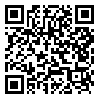Volume 81, Issue 3 (June 2023)
Tehran Univ Med J 2023, 81(3): 198-210 |
Back to browse issues page
Download citation:
BibTeX | RIS | EndNote | Medlars | ProCite | Reference Manager | RefWorks
Send citation to:



BibTeX | RIS | EndNote | Medlars | ProCite | Reference Manager | RefWorks
Send citation to:
Motevalizadeh T, Rezaei F, Sadegh Niat Haghighi K, Sepahvandi M A. The effectiveness of tDCS on insomnia and
mood of female with insomnia. Tehran Univ Med J 2023; 81 (3) :198-210
URL: http://tumj.tums.ac.ir/article-1-12426-en.html
URL: http://tumj.tums.ac.ir/article-1-12426-en.html
Tahereh Motevalizadeh * 
 1, Fatemeh Rezaei1
1, Fatemeh Rezaei1 
 , Khosro Sadegh Niat Haghighi2
, Khosro Sadegh Niat Haghighi2 
 , Mohammad Ali Sepahvandi1
, Mohammad Ali Sepahvandi1 


 1, Fatemeh Rezaei1
1, Fatemeh Rezaei1 
 , Khosro Sadegh Niat Haghighi2
, Khosro Sadegh Niat Haghighi2 
 , Mohammad Ali Sepahvandi1
, Mohammad Ali Sepahvandi1 

1- Department of Psychology, Faculty of Literature and Humanities, Lorestan University, Khorramabad, Iran.
2- Department of Social Medicine, Faculty of Medicine, Tehran University of Medical Sciences, Tehran, Iran.
2- Department of Social Medicine, Faculty of Medicine, Tehran University of Medical Sciences, Tehran, Iran.
Abstract: (848 Views)
Background: Insomnia is the most common sleep disorder that is associated with cortical hyperexcitability. Potentially transcranial direct current stimulation (tDCS) modifies the cortical state related to insomnia. Therefore, we hypothesized that by using tDCS the intensity of insomnia can be reduced, followed by improvement of the mood symptoms.
Methods: This study was an experimental design with a pre-test and post-test with a control group. The statistical sample included 32 females with chronic insomnia that were randomly divided into an experimental group (active stimulation) and a control group (sham stimulation). Transcranial direct current with an intensity of 2 mA was applied for 30 minutes during 12 sessions (three times in the week) in the active stimulation group. In this protocol, anodal stimulation of left Superior temporal gyrus (STG) and cathodal stimulation of right dorsolateral prefrontal cortex (DLPFC) and left secondary motor cortex (SMA). In the control group, sham stimulation was performed for 30 minutes during 12 sessions (three times in the week). The participants were evaluated before and after of the intervention using the Insomnia Severity Index (ISI) and Positive and Negative Affect Scale (PANAS).
Methods: This study was an experimental design with a pre-test and post-test with a control group. The statistical sample included 32 females with chronic insomnia that were randomly divided into an experimental group (active stimulation) and a control group (sham stimulation). Transcranial direct current with an intensity of 2 mA was applied for 30 minutes during 12 sessions (three times in the week) in the active stimulation group. In this protocol, anodal stimulation of left Superior temporal gyrus (STG) and cathodal stimulation of right dorsolateral prefrontal cortex (DLPFC) and left secondary motor cortex (SMA). In the control group, sham stimulation was performed for 30 minutes during 12 sessions (three times in the week). The participants were evaluated before and after of the intervention using the Insomnia Severity Index (ISI) and Positive and Negative Affect Scale (PANAS).
| Results: The findings of this research showed that the application of transcranial direct current stimulation was effective in reducing the severity of insomnia and improving positive and negative affect (P<0.001, F=19.87). The value of this effect (eta2) in the severity of insomnia, negative mood and positive mood is 0.64, 0.34 and 0.6 respectively. Conclusion: The results of the present study showed that the implementation of our designed tDCS protocol for the treatment of insomnia, significantly reduced the intensity of insomnia in women with chronic insomnia and improved their mood symptoms. |
Type of Study: Original Article |
| Rights and permissions | |
 |
This work is licensed under a Creative Commons Attribution-NonCommercial 4.0 International License. |



